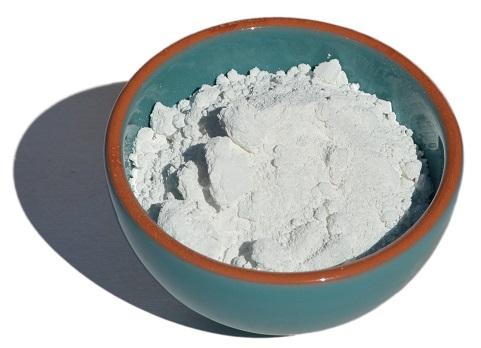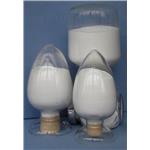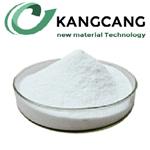Role of Titanium dioxide in Sunscreen
Nov 19,2021
Titanium dioxide is widely used in physical sun protection. And it is also used as a coloring agent in makeup products such as foundations, cushions, and makeup products. Titanium dioxide has different crystals, namely: brookite (rare), anatase, and rutile. For photoprotection, anatase and rutile types with tetrahedral structure are mainly used. The rutile type is the most stable, and its refractive index and density are higher than that of the anatase type.

Sunscreen mechanism
Titanium dioxide mainly uses three methods: reflection, scattering, and absorption to achieve the purpose of sun protection. The early inorganic sunscreens had large particle size, wide particle size distribution, and poor dispersion. They mainly used scattering to shield ultraviolet rays. But while scattering ultraviolet rays, it also scatters visible light. Therefore, sunscreen cosmetics made of them can cause unnatural whitening when applied to the skin, which cannot meet the aesthetic needs of the public.
At present, nano titanium dioxide is mainly used. When its particle size is reduced to nanometers, it mainly uses absorption to shield ultraviolet rays. At the same time, because the particle size is small, the scattering of visible light can be basically ignored. Great improvement. Nano-sized titanium dioxide can not only absorb ultraviolet rays, but also transmit visible light, which solves the aesthetic problem of inorganic sunscreen cosmetics.
Sun protection
The protective power of titanium dioxide against ultraviolet rays is mainly concentrated in the wavelength of 280-350nm. Ultraviolet UVB has a wavelength of 280-320nm, and UVA has a wavelength of 320-400nm, which can cover all UVB, but can only protect part of UVA. Therefore, the use of titanium dioxide sunscreen alone can protect against UVB in the whole range, but the protection against UVA is slightly insufficient. It is necessary to compound other sunscreens to achieve full-range protection.
Safety of titanium dioxide
With the widespread use of nano-sized titanium dioxide (TiO2) in sunscreen products, its safety has begun to attract attention. Because as the particle size becomes smaller, the specific area increases, and the reaction activity of nano-particle size is much larger than that of bulk materials. Sunscreen products are in direct contact with human skin and may affect human health. At present, people's attention to its safety is mainly focused on: 1. The safety after inhalation; 2. The safety when applied to the skin.
On February 18, 2020, the European Commission, according to a 2017 proposal, listed inhalable titanium dioxide as a Class II suspected carcinogen. Studies have confirmed that titanium dioxide diffused into the air cannot be metabolized in the lungs and will continue to accumulate. Some evidence of carcinogenesis has been obtained in animal experiments.
Therefore, the European Union regulations: liquid mixtures containing 1% or more of titanium dioxide powder and having a particle size of less than or equal to 10 microns need to add a warning label to the label: note that inhalable harmful droplets will be formed during spraying, please do not breathe the spray Or mist; solid mixtures containing more than or equal to 1% titanium dioxide need to be marked: note that inhalable harmful dust will be formed during use, please do not inhale the dust.
The hazards of inhaling titanium dioxide to the human body are mainly concentrated in the relevant people engaged in the production of titanium dioxide. For ordinary consumers, daily use of sunscreen products, when using sunscreen spray, may inhale a small amount of titanium dioxide. As long as you hold your breath while using sunscreen spray, you can basically prevent inhalation. The amount of products containing titanium dioxide applied to the skin that can volatilize into the air is very small, and when it enters the lungs through breathing, it is basically negligible. Therefore, when using skin care products containing titanium dioxide on a daily basis, there is no need to worry about being deposited in the lungs and harming the human body after inhalation.
- Related articles
- Related Qustion
- The uses and safety of Titanium dioxide Nov 29, 2023
Titanium dioxide is one of the most widely used metal dioxides for applications such as semiconductors, photocatalysts, pigments, pharmaceutical excipients, and antimicrobials.
- Titanium dioxide Crystal Nov 21, 2023
The space lattice of TiO2 belongs to the tetragonal system, and its rutile-type structure has lattice constants of a=0.459373 nm and c=0.295812 nm (25℃).
- Titanium Dioxide: A Review on Applications, Impact, and Toxicity Mar 31, 2023
Titanium dioxides (TiO2) have been widely studied, due to its interesting general properties in a wide range of fields.
Benzidine is a biphenyl amine that exists at room temperature as a crystalline grayish-yellow, white, or reddish-gray power. It is slightly soluble in cold water, more soluble in hot water, and readily soluble in less-polar solvents such as....
Nov 19,2021Analytical ChemistryCypermethrin is an excellent pyrethroid with high efficiency, low toxicity and low residue, and it is suitable for killing agricultural pests.....
Nov 22,2021DrugsTitanium dioxide
13463-67-7You may like
- Chalcopyrite crystal
Apr 19, 2024
- Crystal Structure and Superconductivity of Vanadium Silicide
Apr 18, 2024
- Crystal Structure of Cadmium Oxide (CdO)
Apr 18, 2024
Titanium dioxide manufacturers
- Titanium dioxide
-

- $1900.00/ T
- 2024-04-19
- CAS:13463-67-7
- Min. Order: 0.1T
- Purity: 98%
- Supply Ability: 20T
- titanium dioxide
-

- $20.00 / 1kg
- 2024-04-19
- CAS:13463-67-7
- Min. Order: 1kg
- Purity: 98%
- Supply Ability: 20ton
- titanium dioxide
-

- $10.00 / 1KG
- 2024-04-19
- CAS:13463-67-7
- Min. Order: 10KG
- Purity: 99%
- Supply Ability: 10000 kilograms/month




